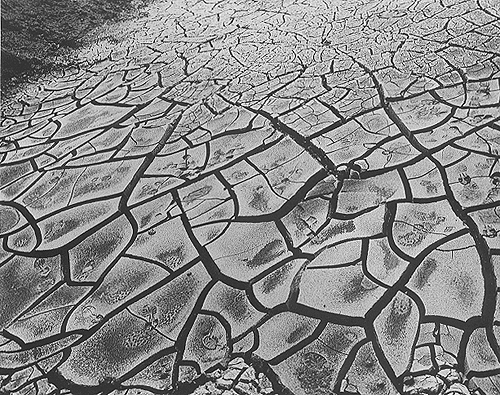
Desiccation cracks (mud cracks)
Plate 104

Desiccation cracks (mud cracks)
Plate 104
The fine-grained particles of mud retain a great amount of water due to the high porosity of their open fabric. When water evaporates and the mud dries up, a considerable reduction of volume occurs. Shrinking of the sediment does not only result in particles getting closer, but in the formation of widening cracks that separate discrete masses. The cracks cross each other and delimit polygons of mud; the reason for this pattern is that the mud reacts as an isotropic substance (equal response in all directions) to stresses that are mostly horizontal. Polygon sizes and fissure widths are proportional, and increase with the thickness of the drying mud. The cracks are wedge-shaped and close downwards.
In the picture, two systems of cracks of different size are recognizable: the larger cracks truncate the smaller ones. Small cracks affect a thin mud layer; they formed first, and, with progressive desiccation, some of them were enlarged while the others became inactive. In other terms, during desiccation, contractional forces extend their action in depth but restrict their area of application by reducing the number of fissures along which they act.
See footprints for scale.
| Photo: V. Rossi 1970. |